
Executive Producer
A film about love, also a memoir, about the trip made in the 1970s to Morocco by Jarda Ícone, an artist, sexologist, and octogenarian rocker, as she defines herself, and Lírio Terron, a human rights activist. In fact, a journey that is not over in their lives. Jarda Icon teaches classes on how women can obtain their own orgasm. With her group of disciples and friends Ana Brasil, Sheyla Fernanda, Caroline Sylvie and Lakshmi she develops self-sustainable feminist and artistic projects. The film is political, but not at all politicized in the traditional sense. It is an ode to the underground and counterculture movements, it is a hymn to freedom, and its title is also a tribute to Oswald d Andrade, one of the main names in Brazilian modernism.

Screenplay
A film about love, also a memoir, about the trip made in the 1970s to Morocco by Jarda Ícone, an artist, sexologist, and octogenarian rocker, as she defines herself, and Lírio Terron, a human rights activist. In fact, a journey that is not over in their lives. Jarda Icon teaches classes on how women can obtain their own orgasm. With her group of disciples and friends Ana Brasil, Sheyla Fernanda, Caroline Sylvie and Lakshmi she develops self-sustainable feminist and artistic projects. The film is political, but not at all politicized in the traditional sense. It is an ode to the underground and counterculture movements, it is a hymn to freedom, and its title is also a tribute to Oswald d Andrade, one of the main names in Brazilian modernism.

Jarda Ícone
A film about love, also a memoir, about the trip made in the 1970s to Morocco by Jarda Ícone, an artist, sexologist, and octogenarian rocker, as she defines herself, and Lírio Terron, a human rights activist. In fact, a journey that is not over in their lives. Jarda Icon teaches classes on how women can obtain their own orgasm. With her group of disciples and friends Ana Brasil, Sheyla Fernanda, Caroline Sylvie and Lakshmi she develops self-sustainable feminist and artistic projects. The film is political, but not at all politicized in the traditional sense. It is an ode to the underground and counterculture movements, it is a hymn to freedom, and its title is also a tribute to Oswald d Andrade, one of the main names in Brazilian modernism.

Director
A film about love, also a memoir, about the trip made in the 1970s to Morocco by Jarda Ícone, an artist, sexologist, and octogenarian rocker, as she defines herself, and Lírio Terron, a human rights activist. In fact, a journey that is not over in their lives. Jarda Icon teaches classes on how women can obtain their own orgasm. With her group of disciples and friends Ana Brasil, Sheyla Fernanda, Caroline Sylvie and Lakshmi she develops self-sustainable feminist and artistic projects. The film is political, but not at all politicized in the traditional sense. It is an ode to the underground and counterculture movements, it is a hymn to freedom, and its title is also a tribute to Oswald d Andrade, one of the main names in Brazilian modernism.
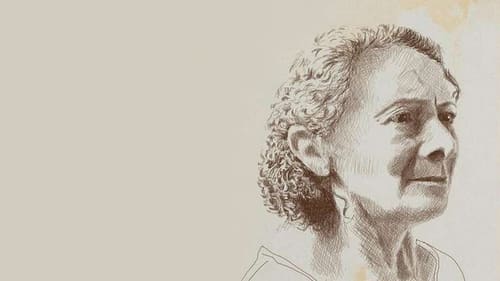
A street vendor who lives in the outskirts of São Paulo returns home at night and does not find her teenager son. After a nonstop search, she finds out the boy was killed by the police and his body is missing. This is the beginning of this woman’s vertiginous fight for the right to bury her son, a fight that will not only unveil the excessive violence of one of most lethal police forces of the world, but also how structural is racism in Brazilian society.

Herself
The raft man Manuel Jacaré was swallowed by the sea when Orson Welles was filming It's All True in 1942. The fact evokes memories of the dictatorship of the Estado Novo, of World War II, of Ceará fishermen's struggle for labor rights and housing in their traditional space - target of real estate speculation.

Voiceover
A self-portrait short film by veteran Brazilian filmmaker Sylvio Lanna.

Self

An authentically marginal cinema created in Catholic university in Brazil. One of the most intriguing and imaginative moments in modern cinema in the voice of some of its select conspirators—with Carlos Reichenbach at the lead—, and through the most razing flow of images that can possibly be conceived.

Senhora Ônibus
An experimental trip about Brazil after H.O.

Mother
Benjamim Zambraia is a young drunk who wanders around the city and is sometimes treated with pampering and sometimes with a beating by his parents (Helena Ignez and Otávio Terceiro). As in Chico's book, the boy is obsessed with a big stone.

Mulher Caminhando de Costas (uncredited)
After relocating to Tokyo, a Brazilian writer begins a new novel, provoked by her experiences in Japan and by one of the last scenes she witnessed in Rio de Janeiro: a female swimmer tearing up the horizon with powerful strokes in the wide, open sea. Those two women apparently share no connection, until their lives start to interfere in one another, strangely linked through the sea. Hannah, the writer, plunges into a journey of self-discovery in Japan, while Ana, the swimmer in Rio de Janeiro, oddly has her body transformed into some kind of inner Ocean.

Self
In 1965, a year after the military coup in Brazil, an oasis of freedom opened in the country's capital. The Brasília Film Festival: a landmark of cultural and political resistance. Its story is that of Brazilian cinema itself.
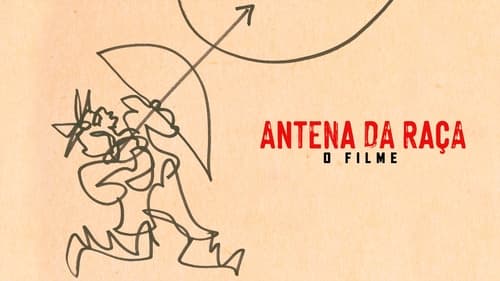
Self
The film comes to appropriate and re-discuss the Brazilian reality, based on the dialogues, excerpts and scenes from Glauber Rocha visceral films and his desire to "remove the masks", from ou third world saga. In this scenario where love and violence coexist in a state of inequality and often abandonment.

After being born Georgina in the outback of Bahia, she became known as Diva Rios in São Paulo’s Boca do Lixo and Rio de Janeiro’s Lapa, as well as Suzy King in the nights of Copacabana, but died as Jacuí Japurá on the border of the United States and Mexico. Four names for just one woman: fascinating, moody and very creative. Singer, songwriter, actress, ballet, folk, burlesque and exotic dancer, snake charmer and fakir were only some of the artistic endeavors she tackled during her life. Found dead on the trailer where she lived in August of 1985, in California, she left behind stories without conclusion, lost remainings of her troubled trajectory and a trail of mystery. Three decades later, two historians gather fragments of her tale with the goal of piecing together the complex puzzle that was her life. Actresses, singers, musicians and performers join them to rescue the poetic aspects of her unique personality. A question resounds throughout the entire movie: Suzy King, who are you?

A person locked in the room.

Short film by Helena Ignez, for the "Programa Convida", from IMS, dedicated to creation during quarantine.

Director
Short film by Helena Ignez, for the "Programa Convida", from IMS, dedicated to creation during quarantine.

The narrative takes place in 1888 and tells the story of Lenita, a young woman, raised by her father, with an educated background, who disregards the existence of a man at his intellectual height. The film exposes the character's internal conflicts and the conventions of the time.

A projectionist at a porn cinema in downtown São Paulo, makes his first film in Super8, an essay about the failure of a lifetime. The scenes from the films you watched intersect with the new images they capture, fiction and reality blending together, weaving a bridge between the past and the present.

Extracts is a short film with images from 1970 to 1972 in the cities of Rio de Janeiro, Salvador, London, Marrakech, Rabat and the Sahara Desert region. The images were filmed by Helena Ignez and Rogério Sganzerla in exile, in the "leaden years" of the military dictatorship.

(voice)
Rare, medium rare, medium, medium well and well done. Through intimate and personal stories, five women share their experiences in relation to the body, from childhood to old age.

Musical Casting
The feature-length documentary Fakir portrays the success of fakirism in Brazil, Latin America and France. This circus art origin show is presented and analyzed through archives that reveals the success of these presentations with their pain resistance championships and the great public presence, including politicians and government officials. Fakir spans current footage from contemporary artists who keep this art alive in performances and shows.

Art Direction
The feature-length documentary Fakir portrays the success of fakirism in Brazil, Latin America and France. This circus art origin show is presented and analyzed through archives that reveals the success of these presentations with their pain resistance championships and the great public presence, including politicians and government officials. Fakir spans current footage from contemporary artists who keep this art alive in performances and shows.

Screenplay
The feature-length documentary Fakir portrays the success of fakirism in Brazil, Latin America and France. This circus art origin show is presented and analyzed through archives that reveals the success of these presentations with their pain resistance championships and the great public presence, including politicians and government officials. Fakir spans current footage from contemporary artists who keep this art alive in performances and shows.

Director
The feature-length documentary Fakir portrays the success of fakirism in Brazil, Latin America and France. This circus art origin show is presented and analyzed through archives that reveals the success of these presentations with their pain resistance championships and the great public presence, including politicians and government officials. Fakir spans current footage from contemporary artists who keep this art alive in performances and shows.

Experimental movie about Rio de Janeiro's Museum of Modern Art's Movie Archive (Cinemateca).

Herself
Helena Ignez is one of the main female figures of Brazilian cinema. She developed a new style of acting. Nowadays, she directs independent films. The documentary tells some of the History of Brazilian cinema, its political context and Helena's trajectory.

Diretora
Ana, a Portuguese actress, dives into Brazil's current atmosphere of identity and political crisis while trying to portray in a feature film the colourful life of famous singer and actress Carmen Miranda, who helped define Brazil's identity.

Screenplay
A film in which dream and reality intertwine, A Moça do Calendário tells the story of inácio, 40, married, without a permanent job. Ex-street sweeper, he works as a mechanic at Barato da Pesada, where he dreams of the calendar girl.

Palestrante (voz)
A film in which dream and reality intertwine, A Moça do Calendário tells the story of inácio, 40, married, without a permanent job. Ex-street sweeper, he works as a mechanic at Barato da Pesada, where he dreams of the calendar girl.

Director
A film in which dream and reality intertwine, A Moça do Calendário tells the story of inácio, 40, married, without a permanent job. Ex-street sweeper, he works as a mechanic at Barato da Pesada, where he dreams of the calendar girl.

Morro do Castelo was chosen by the Portuguese to found Rio de Janeiro city. It was an important historical and architectural reference. Despite its relevance, the hill was destroyed by urban reforms aimed to promote real state speculation.

Jean feels trapped in the logic of longevity that the pharmaceutical industry imposes on him and decides to plan a conscious suicide. He invites Helena to commit suicide to two. She, on the other hand, hesitates, knows that she will live well even if she needs to live alone, but she helps him in his intentions. The silence between them does not reveal distance, but intimacy. These are years of shared affection. Together, they will prepare all the details for the funeral. He dances death while she continues rehearsing life. In the process, the two realize that before the end, there is still a lifetime.

Voice
Guitarist Lanny Gordin was one of the fundamental characters in the transformation of Brazilian music from the 1960s onwards. He electrified Gal Costa, Gilberto Gil, Caetano Veloso and Jards Macalé, among others. Lanny reveals his libertarian process of composition and current thinking, embarking on an unusual odyssey through China, his birthplace, and Brazil, the country where he lives.

"All Paulos in the World" is a cinematographic essay about Paulo José, one of the greatest artists in Brazil, in the year in which he turns 80 years-old.

Marcos returns home after a few years away.

Two years of research and visits to collections, cinematheques and museums; almost seventy interviews that generated 30 hours of recorded material; more than two hundred scanned photos and more than one hundred films watched. In total, more than a thousand hours of work were needed to prepare Brazilian Cinema in the 20th Century. The work is a fascinating journey through all the cinematic cycles that Brazil lived, from the pioneering Belle Époque, through the great studios like Atlântica and Cinédia, Cinema Novo, the urban comedies of the 70's, until the resumption in the late 90's. The documentary is unique, it gives the floor to who really wrote and lived this story intensely.

Narração
In this animated fairy-tale Filly, a lesbian fairy with nimble fingers, seduces women by day dressed as a boy. But at night something strange happens and soon half the population of Whatsit Village are eagerly queuing up.

Ela mesma

Producer
Young directors are filming “The Exhibitionist” in the middle of a farm in a paradise-like region. The film poetically investigates the Brazilian soul, with the Amazon as the center of the world, reflecting on existential issues, the right to sexual freedom and individuality.

Writer
Young directors are filming “The Exhibitionist” in the middle of a farm in a paradise-like region. The film poetically investigates the Brazilian soul, with the Amazon as the center of the world, reflecting on existential issues, the right to sexual freedom and individuality.

Sonia Silk
Young directors are filming “The Exhibitionist” in the middle of a farm in a paradise-like region. The film poetically investigates the Brazilian soul, with the Amazon as the center of the world, reflecting on existential issues, the right to sexual freedom and individuality.

Director
Young directors are filming “The Exhibitionist” in the middle of a farm in a paradise-like region. The film poetically investigates the Brazilian soul, with the Amazon as the center of the world, reflecting on existential issues, the right to sexual freedom and individuality.
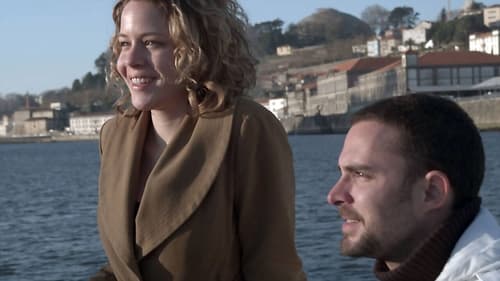
Herself
Filmed over six years in four countries: Portugal, Brazil, Colombia and United States, this romantic drama tells the story of Luzia, a Brazilian screenwriter, and Adrian, a Colombian actor, that fall in love during a film festival in 2009 and will live a fragmented love story while competing in different film festivals around the world.

They live, they act, they love. Today they remember, they relive, they live through cinema and life.

Mãe (voz)
Isabel is a babysitter pregnant of her own child and can't wait to be a mother. Until she meets Joana.

Producer

Music

Screenplay

Screenstory

Director

Voz Off

Helena Ignez
A documentary on the restoration of Rogério Sganzerla's 1970 film "Copacabana, Mon Amour".

Patroa
Employee exploited by her employer changes her life by winning the lottery.

Jarda
Ugly, Me? is a film manifesto made from a workshop for actors called Characters in Search of a Movie, in 'La pa', 'Rio De Janeiro', extended to Paris and 'Kerala' (India). Multifaceted like a kaleidoscope, the characters appear in multi-screens scenes and sequences. The images were captured with different kinds of cameras and Ugly, Me? uses this sign of the variety imposed by independent production as language experimentation. Transposing the boundaries of style, Ugly, Me? navigates in a sea of metaphors, philosophical and musical politics, from Prince Harry to Heraclitus, going through a series of authors like Rimbaud, Brecht, Nietzsche, Bispo do Rosario and Eduardo Viveiros DE Castro, capturing a contradictory and original country.

Executive Producer
Ugly, Me? is a film manifesto made from a workshop for actors called Characters in Search of a Movie, in 'La pa', 'Rio De Janeiro', extended to Paris and 'Kerala' (India). Multifaceted like a kaleidoscope, the characters appear in multi-screens scenes and sequences. The images were captured with different kinds of cameras and Ugly, Me? uses this sign of the variety imposed by independent production as language experimentation. Transposing the boundaries of style, Ugly, Me? navigates in a sea of metaphors, philosophical and musical politics, from Prince Harry to Heraclitus, going through a series of authors like Rimbaud, Brecht, Nietzsche, Bispo do Rosario and Eduardo Viveiros DE Castro, capturing a contradictory and original country.

Associate Producer
Ugly, Me? is a film manifesto made from a workshop for actors called Characters in Search of a Movie, in 'La pa', 'Rio De Janeiro', extended to Paris and 'Kerala' (India). Multifaceted like a kaleidoscope, the characters appear in multi-screens scenes and sequences. The images were captured with different kinds of cameras and Ugly, Me? uses this sign of the variety imposed by independent production as language experimentation. Transposing the boundaries of style, Ugly, Me? navigates in a sea of metaphors, philosophical and musical politics, from Prince Harry to Heraclitus, going through a series of authors like Rimbaud, Brecht, Nietzsche, Bispo do Rosario and Eduardo Viveiros DE Castro, capturing a contradictory and original country.

Writer
Ugly, Me? is a film manifesto made from a workshop for actors called Characters in Search of a Movie, in 'La pa', 'Rio De Janeiro', extended to Paris and 'Kerala' (India). Multifaceted like a kaleidoscope, the characters appear in multi-screens scenes and sequences. The images were captured with different kinds of cameras and Ugly, Me? uses this sign of the variety imposed by independent production as language experimentation. Transposing the boundaries of style, Ugly, Me? navigates in a sea of metaphors, philosophical and musical politics, from Prince Harry to Heraclitus, going through a series of authors like Rimbaud, Brecht, Nietzsche, Bispo do Rosario and Eduardo Viveiros DE Castro, capturing a contradictory and original country.

Director
Ugly, Me? is a film manifesto made from a workshop for actors called Characters in Search of a Movie, in 'La pa', 'Rio De Janeiro', extended to Paris and 'Kerala' (India). Multifaceted like a kaleidoscope, the characters appear in multi-screens scenes and sequences. The images were captured with different kinds of cameras and Ugly, Me? uses this sign of the variety imposed by independent production as language experimentation. Transposing the boundaries of style, Ugly, Me? navigates in a sea of metaphors, philosophical and musical politics, from Prince Harry to Heraclitus, going through a series of authors like Rimbaud, Brecht, Nietzsche, Bispo do Rosario and Eduardo Viveiros DE Castro, capturing a contradictory and original country.

Ritual Xamânico
A study that unwraps a paradisiac scenery, reaching the subjects of Brazility and its force in the change of habits, breaking taboos and bringing out a magical and original reality throught its characters.

Executive Producer
A study that unwraps a paradisiac scenery, reaching the subjects of Brazility and its force in the change of habits, breaking taboos and bringing out a magical and original reality throught its characters.

Screenplay
A study that unwraps a paradisiac scenery, reaching the subjects of Brazility and its force in the change of habits, breaking taboos and bringing out a magical and original reality throught its characters.

Screenstory
A study that unwraps a paradisiac scenery, reaching the subjects of Brazility and its force in the change of habits, breaking taboos and bringing out a magical and original reality throught its characters.

Director
A study that unwraps a paradisiac scenery, reaching the subjects of Brazility and its force in the change of habits, breaking taboos and bringing out a magical and original reality throught its characters.

Mãe
One day away of Marcelo's wedding, the tailor, the groom and his father will have to correct much more than the suit's measures.

Provisório's Mother
Two days in the life of André Provisório, a man with many occupations: private detective, drug dealer, and incorrigible seducer. Between his activities, he meets Mariana, an aspiring theater actress, and falls in love.

A documentary on prolific underground Brazilian filmmaker Rogério Sganzerla.

Jorge, bastard child of the infamous Red Light Bandit, decides himself to pursuit a life of crime after meeting with his father, who has been incarcerated for the last 30 years.

Writer
Jorge, bastard child of the infamous Red Light Bandit, decides himself to pursuit a life of crime after meeting with his father, who has been incarcerated for the last 30 years.

Director
Jorge, bastard child of the infamous Red Light Bandit, decides himself to pursuit a life of crime after meeting with his father, who has been incarcerated for the last 30 years.

Between February an May of 1970, Julio Bresane and Rogerio Sganzerla made 7 films for their company Belair that were forbidden by the Brazilian censorship that reveal today images of an unique freedom.

A road movie that follows a solitary man as he sets of on a journey to the south of Brazil. The strange characters and absurd situations he encounters along the way present an extraordinary portrait of human relations.

Experimental documentary short that debates over Rogério Sganzerla's Brazilian cult classic "The Red Light Bandit".
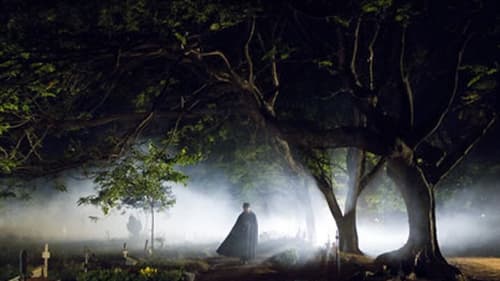
Cabíria
After 40 years in a cell for the mentally ill, Coffin Joe is finally freed. Back on the streets, the sadistic gravedigger is set on fulfilling that for which he was imprisoned: find the woman who can give him the perfect child. During his wanderings through the city of São Paulo he leaves behind a trail of horror as he faces unnatural laws and popular beliefs.

The human body in 5 parts.

Screenplay
A marginal version of Brecht’s piece, “Baal”.

Director
A marginal version of Brecht’s piece, “Baal”.

Mãe de Isis
Elias sees his world threatened when his ex-wife, one recovering junkie, asks for the guard of their son. Fito is in desperation for losing his father because of Elias. Isis, who hides in a vagabond hotel, can be the salvation for Fito and Elias.

A documentary short on Glauber Rocha's mother Lúcia.

Researcher
A short documentary on Belair, an independent Brazilian film company that lasted for only five months in 1970.

Music Supervisor
A short documentary on Belair, an independent Brazilian film company that lasted for only five months in 1970.

Camera Operator
A short documentary on Belair, an independent Brazilian film company that lasted for only five months in 1970.

Herself (archive footage) / (Voz em Off)
A short documentary on Belair, an independent Brazilian film company that lasted for only five months in 1970.

Director
A short documentary on Belair, an independent Brazilian film company that lasted for only five months in 1970.

Ela mesma

Guida
A customs agent, Dr. Amnésio, examines some reels of film, a documentary Orson Welles made about Brazil, and tries to confiscate the material. Then, a party in which repression agents celebrate their victory against freedom and creativity.
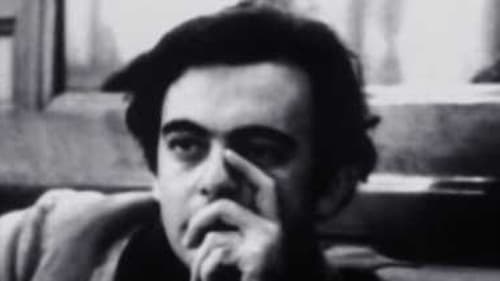
Documentary about Brazilian filmmaker Glauber Rocha, one of the most important names in the Cinema Novo, with interviews with some of his friends and colleagues.

Herself
Helena Ignez's first film as a director is a homage to American architect and contemporary artist Vito Acconti, who made an urban intervention over a bridge in São Paulo, transforming that space for it to be used as shelter by nearby homeless people.

Director
Helena Ignez's first film as a director is a homage to American architect and contemporary artist Vito Acconti, who made an urban intervention over a bridge in São Paulo, transforming that space for it to be used as shelter by nearby homeless people.

A short film made with unused footage from The Red Light Bandit and Carnaval na Lama.

Marcela
Brazilian director Julio Bressane directs this religious biography on the life and work of Saint Jerome, the monk who first translated the Bible into Latin. Set both in the desert and in the posh confines of the Vatican, Jerome (Everaldo Pontes) agonizes over which Latin word would best fit its Hebrew counterpart. ~ Jonathan Crow, Rovi

Self
"Portraits and excerpts from Brazilian films from all times. Actors, directors and images that affirm cinema."

A fantastic tale in the brutal reality of a slum. The life of a boy with the rare gift of flying. Based on a Will Eisner's story

Driver who was left by his wife, who wanted to try a career in the movies, has to deal with their son's revolt when the latter finds his mother, whom he thought dead, singing in a nightclub.

Loosely based on an Oswald de Andrade screenplay, "Perigo Negro" is a segment of anthology film "Oswaldianas" which deals with a uprising soccer player who has his career spoiled by a unscrupulous gambler

Collective film with five segments around the works and life of brazilian writer Oswald de Andrade.

Editor

Orson Welles goes to Brazil to shoot his documentary It's All True.

Documentary on famous Brazilian actresses, female directors and the role of women in Brazilian film history.

Aeromoça
The painter Tino, in professional and political crisis, receives a telegram from his mother-in-law, Selma, announcing her return from Europe. After his wife's death, Tino continues living with Selma, with whom he had ambiguous relations, which he now wants to sever. Weak at this impossible love, he asks the maid Enedina to lock him in his room. There, he revives memories through letters, notes and photographs. Selma's son João is waiting for her at the airport and dreams of loving fulfillment in his own mother's arms.

A dysfunctional family, composed of a prostitute and two gays, one strong and the other fragile and stupid, lives a routine life in Rio de Janeiro. When the slut threatens the other two to stop supporting them, they decide to find an odalisque as an alternative to keep their easy life.

Spider, a banker, lives with three women. This tycoon is a caricature of Brazil's bourgeoisie, his trajectory is the starting point for an essay on the mental underdevelopment of Brazilian elites, in which black humor sets the tone for sharp criticism.

Sônia Silk
Sônia and her homosexual brother are both believed by their mother to be possessed by the devil. She works as a prostitute in the streets of Copacabana and he’s a servant who falls madly in love with his employer.

Daily scenes of a grotesque family living in the metaphorical island of Babaloo.

Two maids decide to rebel against the society that oppresses them and start murdering their own mistresses. “???????????? ???????????????????? ???????? ???????????? ???????????????????????? ???????? ???????????? ????????????????????????, ???????????? ???????????????????????????????????? ???????????? ???????????????????????????? ???????????????? ???????????????? ???????? ???????????? ???????????? ???????????????????????? ???????? ???????????????? ???????????? ???????? ???????????????????????? ???????????????? ???????????????? ???????? ????????????????????????????????. ???????? ???????????????? ???????????????? ???????????????????? ????????????????????????????. ???????????????? ???????????????? ???????????????????????????????????? ????????????, ???????????? ???????????????? ???????????????????? ???????? ????????????????????????????, ???????????????? ???????? ???????? ???????????????? ???????????????????? ???? ????????????????, ???????????? ???????????????? ???????? ???????? ????????????????????????????????.”

Bressane’s first color film, shot in the home of the artist Elyseu Visconti. Part of it is missing sound and final editing because the director was forced to leave Brazil. Horror and humor to deal with the subject of insanity: “In the end everyone leaves the house as though they were laboratory mice escaping, they invade the city and contaminate the world”. “If we talk about horror, this film deals with national horror, with Mojica Marins as an emblem. There might be a few touches of Corman and English horror, but it is another level of horror. What transformed the film was the location where we were shooting, the house of a 19th century painter, a receptacle of light. When I arrived and saw that house, that light, I said: ‘This is the film. This is the horror’. The meaning of the film, its appeal, derives from this laboratory of light” (J. Bressane). — Torino Film Festival

Ângela Carne e Osso
Ângela Carne e Osso (Angela Meat and Bone), a young nymphomaniac, lives surrounded by delinquents, and exerts intense allure on them, dominating them all with her erotic power.

Janete Jane
Born and raised in the misery of Brazilian slums, Jorge becomes a luxury house burglar in São Paulo and gets nicknamed "The Red Light Bandit" by the sensationalist press. In addition to wearing a red flashlight, he talks to his hostages in an irreverent tone and makes bold breakthroughs to later spend the money extravagantly. His world is the decadent neighbourhood of Boca do Lixo.

Luciana
The story of a civil servant who lives with his elderly mother. Falling in love with a corrupt politician's young and rich daughter, he abandons himself to crazy and violent situations.

Mariana
In a small town in Minas Gerais, the arrival of a young priest causes a commotion in the conservative atmosphere of the place, aggravated by the sudden attraction this priest feels for a beautiful girl. This forbidden love affair soon turns into an unbridled passion.

Mariá
In rural Brazil, villagers battle wealthy land barons for the sake of their own survival.
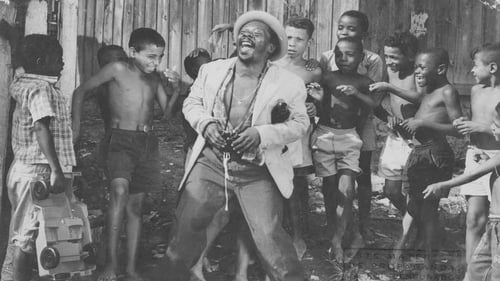
Marta
Based on true events in Rio de Janeiro, in 1960, when a gang having the infamous outlaw Tião Medonho as a leader performed a sensational railroad hold-up on a train carrying a small fortune.

Ely
Made in the famous "Água de Meninos" market, the greatest popular market in Salvador, Bahia, Brazil. Salvador is revealed without prejudices, from the world of high finance up to the sordid environment of exotic cabarets.

Co-Producer
A man and a woman are laying on a chess-like patio. Both are trying to reach each other in the best way they can. However, for some odd reason they don't get on their feet, they don't talk to each other, and the only sounds heard are voices coming from a radio and strange sounds that seem to indicate something's about to happen.

A man and a woman are laying on a chess-like patio. Both are trying to reach each other in the best way they can. However, for some odd reason they don't get on their feet, they don't talk to each other, and the only sounds heard are voices coming from a radio and strange sounds that seem to indicate something's about to happen.

































